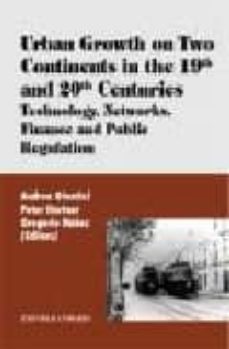Imprescindibles
Ficción
No Ficción
Ciencias y tecnología Biología Ciencias Ciencias naturales Divulgación científica Informática Ingeniería Matemáticas Medicina Salud y dietas Filología Biblioteconomía Estudios filológicos Estudios lingüísticos Estudios literarios Historia y crítica de la Literatura
Humanidades Autoayuda y espiritualidad Ciencias humanas Derecho Economía y Empresa Psicología y Pedagogía Filosofía Sociología Historia Arqueología Biografías Historia de España Historia Universal Historia por países
Infantil
Juvenil
#Jóvenes lectores Narrativa juvenil Clásicos adaptados Libros Wattpad Libros Booktok Libros de influencers Libros de Youtubers Libros Spicy Juveniles Libros LGTBIQ+ Temas sociales Libros ciencia ficción Libros de acción y aventura Cómic y manga juvenil Cómic juvenil Manga Shonen Manga Shojo Autores destacados Jennifer L. Armentrout Eloy Moreno Nerea Llanes Hannah Nicole Maehrer
Libros de fantasía Cozy Fantasy Dark academia Hadas y Fae Romantasy Royal Fantasy Urban Fantasy Vampiros y hombres lobo Otros Misterio y terror Cozy mistery Policiaca Spooky Terror Thriller y suspense Otros
Libros románticos y de amor Dark Romance Clean Romance Cowboy Romance Mafia y amor Romance dramatico Romcom libros Sport Romance Otros Clichés Enemies to Lovers Friends to Lovers Hermanastros Slow Burn Fake Dating Triángulo amoroso
Cómic y manga
Novela gráfica Novela gráfica americana Novela gráfica europea Novela gráfica de otros países Personajes, series y sagas Series y sagas Star Wars Superhéroes Cómics DC Cómics Marvel Cómics otros superhéroes Cómics Valiant
eBooks
Literatura Contemporánea Narrativa fantástica Novela de ciencia ficción Novela de terror Novela histórica Novela negra Novela romántica y erótica Juvenil Más de 13 años Más de 15 años Infantil eBooks infantiles
Humanidades Autoayuda y espiritualidad Ciencias humanas Economía y Empresa Psicología y Pedagogía Filosofía Historia Historia de España Historia Universal Arte Cine Música Historia del arte
Ciencia y tecnología Ciencias naturales Divulgación científica Medicina Salud y dietas Filología Estudios lingüísticos Estudios literarios Historia y crítica de la Literatura Estilo de vida Cocina Guías de viaje Ocio y deportes
GREGORIO NUÑEZ
Recibe novedades de GREGORIO NUÑEZ directamente en tu email
Filtros
Del 1 al 2 de 2
GADIR 9788496974418
Para comprender la crisis es un análisis breve, conciso y riguroso de la grave crisis económica que afecta al mundo desde 2007. Se trata de un ensayo dirigido tanto a los profesionales como a todas aquellas personas interesadas en conocer el porqué de esta crisis y sus posibles consecuencias y soluciones. Para ello, los autores comienzan por ofrecer una perspectiva sobre episodios históricos comparables y sobre las teorías que han tratado de explicarlos, analizando crisis como las que dieron lugar a las revoluciones de 1789 y 1848 y, especialmente, la Gran Depresión de 1929, la más próxima a la actual por sus dimensiones. Los autores se centran después en la crisis actual, analizando el fenómeno en primer lugar en Estados Unidos y después en países como Irlanda, Reino Unido o Islandia, para centrarse finalmente en España. El diagnóstico que llevan a cabo se sintetiza en el estallido de una burbuja bancaria e inmobiliaria de enormes dimensiones. Y los fallos que lo produjeron deben atribuirse más a las actuaciones seguidas por políticos y supervisores que a fallos intrínsecos del sistema. Los autores defienden la necesidad de implantar políticas adecuadas de tipo preventivo, y especialmente, de una regulación y supervisión correctas, que no pueden dejarse en manos del mercado, como han defendido algunas líneas de pensamiento, especialmente en Estados Unidos. El análisis del caso de España establece las similitudes y diferencias con el de Estados Unidos, y profundiza sobre las áreas que requieren reformas estructurales, como la fiscal, el mercado de trabajo, la educación o el modelo de Estado.
Ver más
Tapa blanda
ANDREA GIUNTINI, PETER HERTNER y GREGORIO NUÑEZ
COMARES 9788484449126
This volume emerges from a series of meetings held over a number of years by different specialists from a variety of countries who are experts on the history of cities during the industrial age. Specifically, they worked on the set up and administration of the municipal services of these cities. It has been a long journey which significantly encouraged the growth and maturity of the subject. The original group of experts was, at one point, larger than the collection of authors whose work is reflected in these pages. There are varied reasons and a number of practical contingencies, which are not all strictly scientific, which have led to the final exclusion of some texts. However, the participation of those authors in the debates was useful and it confirms, from the very beginning, the idea that the panorama offered is wider and more articulate still than is manifested here. The aforementioned meetings took place during recent years with the aim of studying urban services and infrastructures from an historical perspective throughout the second industrial revolution. Therefore, the chronological framework starts in the mid-nineteenth century, when the explosive growth of industrial cities generated serious demographic and social problems on a scale previously unknown. This framework continues until the second half of the 20th century, which is when the advanced societies of Europe and America finally managed to establish the valid criteria and the necessary instruments to solve such challenges. Included in the great historical process that some specialists have labelled the "first globalization", the subject here presented offers a broad and very significant sample of the urban history of the world.
Ver más
Otros
Del 1 al 2 de 2
























